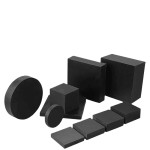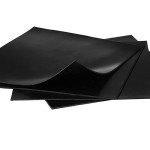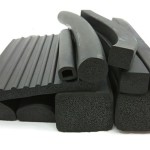| Material: | Silicon |
| Size: | 12mm x 14mm |
| Hardness (Shore A): | 50-75° |
| Minimum length: | 50m |
| Full coil length: | 100m |
| Colour: | Back |
| Estimated delivery: | 8 to 10 working days |
- Stock: In Stock
- Model: RPi12x14 Si
What is black silicon tube?
Black silicon tube is a type of silicon structure that efficiently absorbs solar energy from a wide spectrum, including sunlight and space light. The notable characteristic of black silicon tube is its ability to convert light energy into high temperature, thereby generating electrical energy through heat transfer materials.
Black silicon tubes are typically in the form of narrow tubes and have a black color, allowing them to capture light effectively. The internal structure of the tube consists of a layer of black silicon, which is produced through surface treatment and nanostructure formation. These silicon regions have the ability to collect a wide range of light energy, including sunlight and space light.
Black silicon tubes are applied in solar energy and photovoltaic-thermal (PVT) technologies. They can be used in solar energy collection systems, solar thermal absorption systems, and other energy conversion applications. With their ability to collect broad-spectrum light and efficiently convert energy, black silicon tubes have the potential to enhance the performance and efficiency of solar energy devices and PVT systems.
Black silicon tubes have various applications in solar energy and photovoltaic-thermal (PVT) technologies, aiming to improve the performance and efficiency of solar energy devices. Below are some common applications of black silicon tubes:
1. Solar energy harvesting systems: In solar energy harvesting systems, black silicon tubes are used as heat-absorbing panels to capture light energy and convert it into heat. These tubes have the ability to enhance light absorption and rapidly increase temperature, thereby increasing energy conversion efficiency and generating more electricity.
2. Solar thermal absorption systems: Black silicon tubes are also used in solar thermal absorption systems. They enhance the process of thermal absorption from sunlight and convert it into other forms of energy, such as heat for heating or electrical energy.
3. Other energy conversion applications: Black silicon tubes have potential applications in other energy conversion systems, such as concentrated solar photovoltaic-thermal (CSPV) systems, solar-powered refrigeration systems, and integrated solar energy systems. They can harness broad-spectrum light and high temperatures to generate electricity and desired thermal energy.
With their ability to collect broad-spectrum light and efficiently convert energy, black silicon tubes contribute to enhancing the performance of solar energy devices and PVT systems. By harnessing a wide range of the electromagnetic spectrum and efficient energy conversion, they optimize the utilization of solar energy sources and contribute to sustainable development and rational utilization of renewable energy sources. Here are some benefits and potentials of black silicon tubes:
1. Increased conversion efficiency: Black silicon tubes have the ability to collect light from a wide spectrum, including sunlight and space light. This enhances the energy conversion efficiency from light to electricity or heat. Consequently, solar energy devices and PVT systems that utilize black silicon tubes can produce more energy compared to traditional technologies.
2. Multifunctional integration: Black silicon tubes combine both heat-absorbing and electricity-generating functions. This allows them to be used in integrated solar energy systems, where light energy is converted into thermal energy for heating or cooling purposes, while simultaneously generating electricity. This multifunctional integration optimizes space and resource utilization.
3. Flexible applications: Black silicon tubes can be designed and manufactured in various sizes and shapes, depending on the specific requirements of each application. They can be integrated into solar energy devices such as solar panels, solar energy modules, or solar thermal systems in different structures and forms.
4. Contribution to sustainable development: The use of black silicon tubes in solar energy devices and PVT systems enhances the utilization of renewable energy sources and reduces dependence on fossil fuels. This contributes to sustainable development, reduces carbon emissions, and protects the environment.
In summary, black silicon tubes are an advanced technology in the field of solar energy and PVT. They offer significant benefits such as increased energy conversion efficiency, multifunctional integration, and flexible applications. With their ability to collect broad-spectrum light and efficiently convert energy, black silicon tubes optimize the utilization of solar energy sources and contribute to sustainable development.
| Specifications | |
| Thickness | |
| Inner diameter | |
| Outer diameter | |




